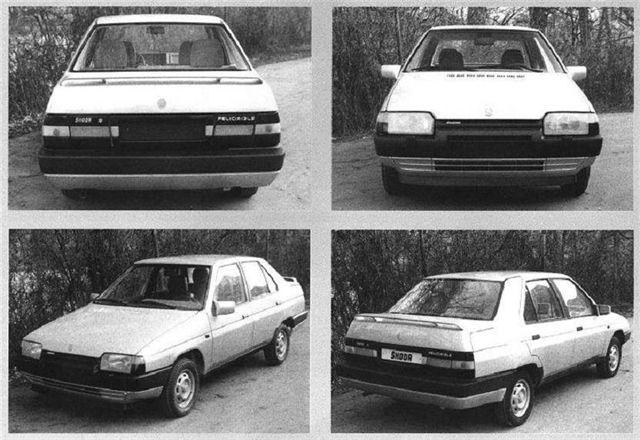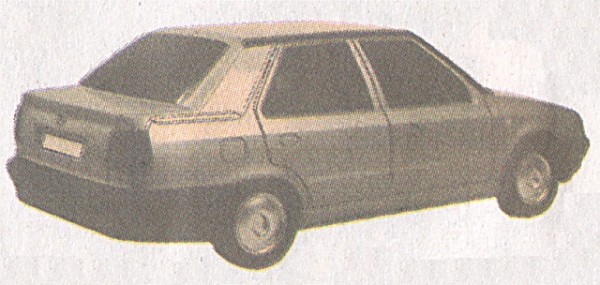Yeah... I don't have any cars to post, but I was wondering-if the Wright bros. failed in their ventures into the heavier-than-air-craft industry, could they possibly start an auto business?
You are using an out of date browser. It may not display this or other websites correctly.
You should upgrade or use an alternative browser.
You should upgrade or use an alternative browser.
The ATL Automobiles & Automakers Thread.
- Thread starter The Uchronian
- Start date
Well, I'll be......thanks for the contribution, Petike, I thought most people might have forgotten about this thread by now.
The thread is hibernating, not dead.
But please, don't quote entire posts. Edit your previous post by throwing out the pics. Thanks.
Yeah... I don't have any cars to post, but I was wondering-if the Wright bros. failed in their ventures into the heavier-than-air-craft industry, could they possibly start an auto business?
Or possibly motorbikes. It was their main specialization, along with bicycles.
1. Timeline: Better Weather, Less Revolutionary Bloodshed, More Indigestions - An Alternate History of the Kingdom of Hawaii
2. Model Name/Manufacturer: Johnson-Sperry Pioneer (aka Pioneer II or New Pioneer)
3. Model Types: 2-door coupé
4. Model Year: 1969-1976 (2nd generation models)
5. Nation of Origin: The United States of America
6. Production run: 1961-1987 (with numerous updates and facelifts)
7. Number built: 8 547 692
8. Engine: 848 cc 2-stroke I3, 1512 cc V4
9. Horsepower: 65 hp (48 kW, acceleration from 0 to 100 km/h in ca 15-16 seconds)
10. Drivetrain: 2wd, FF layout
11. Transmission: manual 4 speed (early 1969 run) and manual 5 speed (most of the second generation models)
12. Weight: ca OTL 920 kg
13. Description: The Johnson-Sperry company was founded by Kurt Leslie Johnson and George Amos Sperry in 1882 in Arkford [1], Massachusetts, as a manufacturer of coaches, cabs, sleighs and bicycles. In 1904, the company started manufacturing its first motorcycles and had considerable success with them. In 1910, encouraged by the recent success with motorbikes, the company decided to branch out into the fledgling motorcar business as well. However, fame and fortune for the brand didn't come as easily as its owners hoped they would come... From their formative years onward, Johnson-Sperry cars could never expect to compete successfully with the likes of bigger automotive companies and their mass-produced people cars (e.g. the Bridger [2] Buck [3]). However, they had several aces up their sleeves: A tradition of in-house innovation, experimentation with new concepts, quality customer service and well thought out marketing. One notable early success after a decade in the doldrums came in the 1920s, with the Johnson-Sperry Pioneer. While not as modifiable or cheap as the Bridger Buck, it was far more durable, of a higher quality build and still very accessible both financially and on a service level. The "first Pioneer" was a milestone for J-S and convinced them to not give up on the production of passenger cars. This payed off in the 1930s and 1940s, when J-S created several highly succesful passenger models that sold well and were praised for their reliability and technological provess. During the late 1930s, J-S produced one of the most celebrated sportscars of all time - the Johnson-Sperry Challenger. This model really helped the company to make a name for itself and with a great deal of attention from the contemporary media, Johnson-Sperry became a household name virtually overnight. J-S didn't neglect the civilian market either and steadily kept bringing in newer and newer innovative features, often taken for granted nowadays. Probably the biggest was the introduction of the first ever safety bands [4] in 1942 (already as standard issue in the then-newest passenger car, the Johnson-Sperry Cavalier). Research invested not only into revolutionary safety measures, but shock absorbers and a brand new type of fuel injection fully payed off. J-S was soon immitated by many an envious car company worldwide. During the late 1950s, Johnson-Sperry, not completely satisfied with the roster of passenger models they offered in the last decade or so, decided to take the non-racing market by surprise again. The result was the 1961 Pioneer. While a revival of the name of the 1920s classic and conceptually based on a short-lived model from the late 1950s, the Pioneer was a landmark passenger car, which offered many extensive overhauls in its interior, engine and performance. Sales were cautious at first, but then skyrocketed. By 1964, the Pioneer was selling like hotcakes. J-S, encouraged by the unexpectedly high sales, started working on a proper, next generation follow-up. The result was the 1969-1976 Pioneer, which you can see on the photos below. This second generation became the definite look of the new Pioneer and helped establish it as a classic among smalltown and urban passenger cars, with a proud racecar edge to it. The third (1976-1984) and fourth generation (1984-1987) were seen by many as merely facelifts and modernizations of the second one. The "new Pioneer" (as it's often been dubbed) has also proven a remarkable success in the field of motorsports, particularly coutryride racing [5]. It has scored high in innumerable American and European racing events, from regional affairs to world championships.
14. OTL equivalent: SAAB 96 (1979 limited edition)
(OOC notes:
[1] - fictional city, founded in the 1820s, since most of US history and culture is quite a bit different in this TL
[2] - a company founded by American business mogul Nathan Bridger. Bridger Cars (or just "Bridger") is this TL's Ford (note the pun). Or, if you will, a sort of American-esque Volkswagen...
[3] - the Bridger Buck was the first mass-produced, highly affordable and long-lived car model, with a fate very reminescent of the Ford Model T
[4] - ATL term for seatbelts/safetybelts (popularized by Johnson-Sperry to the point it became a colloquial word, since they didn't copyright it)
[5] - an analogue of OTL rally racing, particularly the off-road sort with European-style rules. This reference is meant as a tip-of-the-hat to the OTL SAAB 96, which was also a highly succesful rally car in the 1960s and 1970s and is still a frequent sight in vintage car rallies.)

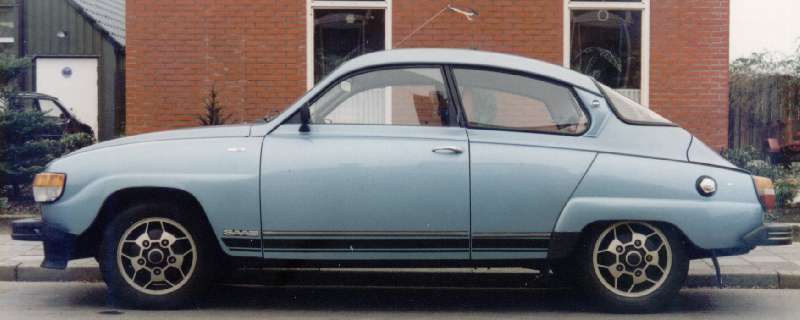


Other Johnson-Sperry cars:
Challenger I (Classic Challenger)
Challenger II (New Challenger, Millennium Challenger)
2. Model Name/Manufacturer: Johnson-Sperry Pioneer (aka Pioneer II or New Pioneer)
3. Model Types: 2-door coupé
4. Model Year: 1969-1976 (2nd generation models)
5. Nation of Origin: The United States of America
6. Production run: 1961-1987 (with numerous updates and facelifts)
7. Number built: 8 547 692
8. Engine: 848 cc 2-stroke I3, 1512 cc V4
9. Horsepower: 65 hp (48 kW, acceleration from 0 to 100 km/h in ca 15-16 seconds)
10. Drivetrain: 2wd, FF layout
11. Transmission: manual 4 speed (early 1969 run) and manual 5 speed (most of the second generation models)
12. Weight: ca OTL 920 kg
13. Description: The Johnson-Sperry company was founded by Kurt Leslie Johnson and George Amos Sperry in 1882 in Arkford [1], Massachusetts, as a manufacturer of coaches, cabs, sleighs and bicycles. In 1904, the company started manufacturing its first motorcycles and had considerable success with them. In 1910, encouraged by the recent success with motorbikes, the company decided to branch out into the fledgling motorcar business as well. However, fame and fortune for the brand didn't come as easily as its owners hoped they would come... From their formative years onward, Johnson-Sperry cars could never expect to compete successfully with the likes of bigger automotive companies and their mass-produced people cars (e.g. the Bridger [2] Buck [3]). However, they had several aces up their sleeves: A tradition of in-house innovation, experimentation with new concepts, quality customer service and well thought out marketing. One notable early success after a decade in the doldrums came in the 1920s, with the Johnson-Sperry Pioneer. While not as modifiable or cheap as the Bridger Buck, it was far more durable, of a higher quality build and still very accessible both financially and on a service level. The "first Pioneer" was a milestone for J-S and convinced them to not give up on the production of passenger cars. This payed off in the 1930s and 1940s, when J-S created several highly succesful passenger models that sold well and were praised for their reliability and technological provess. During the late 1930s, J-S produced one of the most celebrated sportscars of all time - the Johnson-Sperry Challenger. This model really helped the company to make a name for itself and with a great deal of attention from the contemporary media, Johnson-Sperry became a household name virtually overnight. J-S didn't neglect the civilian market either and steadily kept bringing in newer and newer innovative features, often taken for granted nowadays. Probably the biggest was the introduction of the first ever safety bands [4] in 1942 (already as standard issue in the then-newest passenger car, the Johnson-Sperry Cavalier). Research invested not only into revolutionary safety measures, but shock absorbers and a brand new type of fuel injection fully payed off. J-S was soon immitated by many an envious car company worldwide. During the late 1950s, Johnson-Sperry, not completely satisfied with the roster of passenger models they offered in the last decade or so, decided to take the non-racing market by surprise again. The result was the 1961 Pioneer. While a revival of the name of the 1920s classic and conceptually based on a short-lived model from the late 1950s, the Pioneer was a landmark passenger car, which offered many extensive overhauls in its interior, engine and performance. Sales were cautious at first, but then skyrocketed. By 1964, the Pioneer was selling like hotcakes. J-S, encouraged by the unexpectedly high sales, started working on a proper, next generation follow-up. The result was the 1969-1976 Pioneer, which you can see on the photos below. This second generation became the definite look of the new Pioneer and helped establish it as a classic among smalltown and urban passenger cars, with a proud racecar edge to it. The third (1976-1984) and fourth generation (1984-1987) were seen by many as merely facelifts and modernizations of the second one. The "new Pioneer" (as it's often been dubbed) has also proven a remarkable success in the field of motorsports, particularly coutryride racing [5]. It has scored high in innumerable American and European racing events, from regional affairs to world championships.
14. OTL equivalent: SAAB 96 (1979 limited edition)
(OOC notes:
[1] - fictional city, founded in the 1820s, since most of US history and culture is quite a bit different in this TL
[2] - a company founded by American business mogul Nathan Bridger. Bridger Cars (or just "Bridger") is this TL's Ford (note the pun). Or, if you will, a sort of American-esque Volkswagen...
[3] - the Bridger Buck was the first mass-produced, highly affordable and long-lived car model, with a fate very reminescent of the Ford Model T
[4] - ATL term for seatbelts/safetybelts (popularized by Johnson-Sperry to the point it became a colloquial word, since they didn't copyright it)
[5] - an analogue of OTL rally racing, particularly the off-road sort with European-style rules. This reference is meant as a tip-of-the-hat to the OTL SAAB 96, which was also a highly succesful rally car in the 1960s and 1970s and is still a frequent sight in vintage car rallies.)




Other Johnson-Sperry cars:
Challenger I (Classic Challenger)
Challenger II (New Challenger, Millennium Challenger)
Last edited:
The way it was not:

Škoda 935 (single prototype, meant to be a competitor to the Tatra 77 that was introduced in 1934).



Škoda 720s (saloon and station wagon versions). *sighs and curses the early 1970s government*
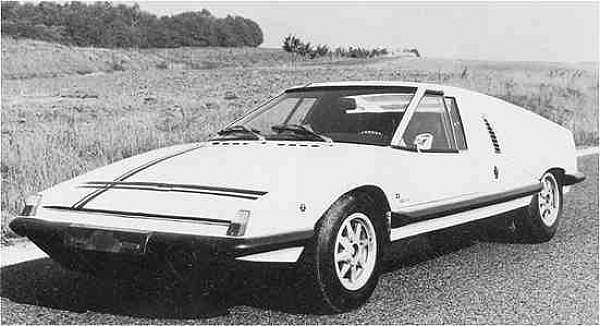
Škoda Super Sport (concept high-performance race car, 1970s).
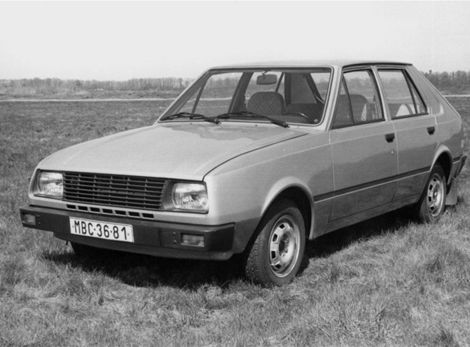
A Škoda Favorit based on the original mid-eighties prototype (looks disturbingly like a Yugo, doesn't it ? ).
).

A Škoda Favorit Saloon.
The pictures are not mine. I've found them online. Someone already had the same idea with the never-made Saloon as me.

Škoda 935 (single prototype, meant to be a competitor to the Tatra 77 that was introduced in 1934).



Škoda 720s (saloon and station wagon versions). *sighs and curses the early 1970s government*

Škoda Super Sport (concept high-performance race car, 1970s).

A Škoda Favorit based on the original mid-eighties prototype (looks disturbingly like a Yugo, doesn't it ?

A Škoda Favorit Saloon.
The pictures are not mine. I've found them online. Someone already had the same idea with the never-made Saloon as me.
Last edited:
Figured I'd get this TL going again, so here's another one from For Want of a Nail::
1. Timeline: For Want of a Nail(the original)
2. Model Name/Manufacturer: Martinez Aldebaran
3. Model Type: 2 door Classical[1] coupe
4. Model Year: 1974
5. Nation of Origin: Mexico
6. Production run: 1970-1977
7. Number built: 48,300 units
8. Engine: 5.6 liter V-12
9. Horsepower: 305 hp @ 4700 rpm
10. Drivetrain: Rear-wheel drive
11. Transmission: 4 speed automatic
12. Weight: 4182 lbs.
13. Description(not required, but recommended): A specialty car made during the Classical craze of the '70s. Featured an updated version of the classic Conquistador V-12 so popular with young races back in the '50s. Rumor has it that Vicente Mercator bought one shortly before he died, though, if true, its whereabouts aren't known at this time
14. OTL Equivalent: [1]In the '70s and '80s, IOTL, there was a bit of a Retro-car fad that became popular in the United States, that is, cars with '30s style bodies, but with modern conveniences and hardware; Clenet and Excalibur were two of the more well-known makers of the era, though there were several others as well.
1. Timeline: For Want of a Nail(the original)
2. Model Name/Manufacturer: Tucker-Cardenas Montero
3. Model Type: 4 door large SUV
4. Model Year: 1975
5. Nation of Origin: Mexico
6. Production run: 1969-88
7. Number built: 140,000 units
8. Engine: 7.7 liter twin turbo V-8
9. Horsepower: 469 hp @ 5400 rpm
10. Drivetrain: All wheel drive
11. Transmission: 4 speed automatic
12. Weight: 5600 lbs.
13. Description(not required, but recommended): The Tucker-Cardenas company was a short-lived but well known maker of specialty sports cars headquartered in La Colina(OTL's Visalia), California. One of their best known products, though, was this SUV, the Montero. About as large as the average small APC, and with the strength of a terramobile, this car could handle just about anything, from the bogs of eastern Jefferson to the frozen wilds of Alaska. And with a top end of 140 miles an hour it wasn't for the faint of heart, either. Was also made in a military version, for the U.S. Army.
14. OTL Equivalent: T.B.D.
1. Timeline: For Want of a Nail(the original)
2. Model Name/Manufacturer: Martinez Aldebaran
3. Model Type: 2 door Classical[1] coupe
4. Model Year: 1974
5. Nation of Origin: Mexico
6. Production run: 1970-1977
7. Number built: 48,300 units
8. Engine: 5.6 liter V-12
9. Horsepower: 305 hp @ 4700 rpm
10. Drivetrain: Rear-wheel drive
11. Transmission: 4 speed automatic
12. Weight: 4182 lbs.
13. Description(not required, but recommended): A specialty car made during the Classical craze of the '70s. Featured an updated version of the classic Conquistador V-12 so popular with young races back in the '50s. Rumor has it that Vicente Mercator bought one shortly before he died, though, if true, its whereabouts aren't known at this time
14. OTL Equivalent: [1]In the '70s and '80s, IOTL, there was a bit of a Retro-car fad that became popular in the United States, that is, cars with '30s style bodies, but with modern conveniences and hardware; Clenet and Excalibur were two of the more well-known makers of the era, though there were several others as well.
1. Timeline: For Want of a Nail(the original)
2. Model Name/Manufacturer: Tucker-Cardenas Montero
3. Model Type: 4 door large SUV
4. Model Year: 1975
5. Nation of Origin: Mexico
6. Production run: 1969-88
7. Number built: 140,000 units
8. Engine: 7.7 liter twin turbo V-8
9. Horsepower: 469 hp @ 5400 rpm
10. Drivetrain: All wheel drive
11. Transmission: 4 speed automatic
12. Weight: 5600 lbs.
13. Description(not required, but recommended): The Tucker-Cardenas company was a short-lived but well known maker of specialty sports cars headquartered in La Colina(OTL's Visalia), California. One of their best known products, though, was this SUV, the Montero. About as large as the average small APC, and with the strength of a terramobile, this car could handle just about anything, from the bogs of eastern Jefferson to the frozen wilds of Alaska. And with a top end of 140 miles an hour it wasn't for the faint of heart, either. Was also made in a military version, for the U.S. Army.
14. OTL Equivalent: T.B.D.
Last edited:
1. Timeline:Transport America Redux
2. Model Name/Manufacturer: Harvester H300/ IHC Motors
3. Model Type: 4 Door Dually Long Bed 1 Ton
4. Model Year: 2003
5. Nation of Origin: United States
6. Production run: 2003-present day
7. Number built: 300,000 per year
8. Engine: 7.3L 444CI Turbo Diesel (Reapers)
9. Horsepower: 250@2,600 RPM w/automatic and 505@1,600RPM w/automatic
275@2,800 RPM w/manual and 525@1,600 RPM w/manual
10. Drivetrain: Rear-wheel drive
11. Transmission: 4 sp auto/ 6 sp Manual
12. Weight: 8600 lbs
13. Description(not required, but recommended): 2nd gen design from former Dodge engineers now owned by the IHC corporation. Bought in 1996 after Chrysler declared bankruptcy again. Only the Durango and Truck segment was bought in the deal. AMC aquired some of Chrysler with the rest going to Toyota.
14. OTL Equivalent: 2003 Dodge Ram 3500 Dually with Cummins engine
2. Model Name/Manufacturer: Harvester H300/ IHC Motors
3. Model Type: 4 Door Dually Long Bed 1 Ton
4. Model Year: 2003
5. Nation of Origin: United States
6. Production run: 2003-present day
7. Number built: 300,000 per year
8. Engine: 7.3L 444CI Turbo Diesel (Reapers)
9. Horsepower: 250@2,600 RPM w/automatic and 505@1,600RPM w/automatic
275@2,800 RPM w/manual and 525@1,600 RPM w/manual
10. Drivetrain: Rear-wheel drive
11. Transmission: 4 sp auto/ 6 sp Manual
12. Weight: 8600 lbs
13. Description(not required, but recommended): 2nd gen design from former Dodge engineers now owned by the IHC corporation. Bought in 1996 after Chrysler declared bankruptcy again. Only the Durango and Truck segment was bought in the deal. AMC aquired some of Chrysler with the rest going to Toyota.
14. OTL Equivalent: 2003 Dodge Ram 3500 Dually with Cummins engine
Last edited:
1. Timeline: Better Weather, Less Revolutionary Bloodshed, More Indigestions - An Alternate History of the Kingdom of Hawaii
2. Model Name/Manufacturer: Johnson-Sperry Challenger (aka Challenger II or Millenium Challenger)
3. Model Types: 2-door convertible roadster
4. Model Year: 2003 (1990s-2000s revival of the 30s classic, 2nd generation (2002-2007) model)
5. Nation of Origin: The United States of America
6. Production run: 1998-2007 (2 generations and a few small facelifts)
7. Number built: 2 784 268
8. Engine: V8 DOHC 32 valves
9. Horsepower: 305 bhp (227 kW, acceleration from 0 to 100 km/h in ca 4.7-5.1 seconds)
10. Drivetrain: 2wd, front mid-engine, rear-wheel-drive layout (FMR)
11. Transmission: manual 5 speed
12. Weight: ca OTL 1,120 kg
13. Description: A modern day revival of the classic late 1930s Challenger, one of Johnson-Sperry's bestselling cars of all time. Revealed to the public at the annual Hudson Automotive Exhibitions in New York in 1998, the Challenger II was no slouch either, living up to the legend of its world-famous predecessor and selling more than 2 million units during its nearly 10 years long production run. It truly managed what it set out to achieve : "The smart and speedy little roadcar for the coming new millenium.", as the official Johnson-Sperry advertising put it.
14. OTL equivalent: Panoz Roadster
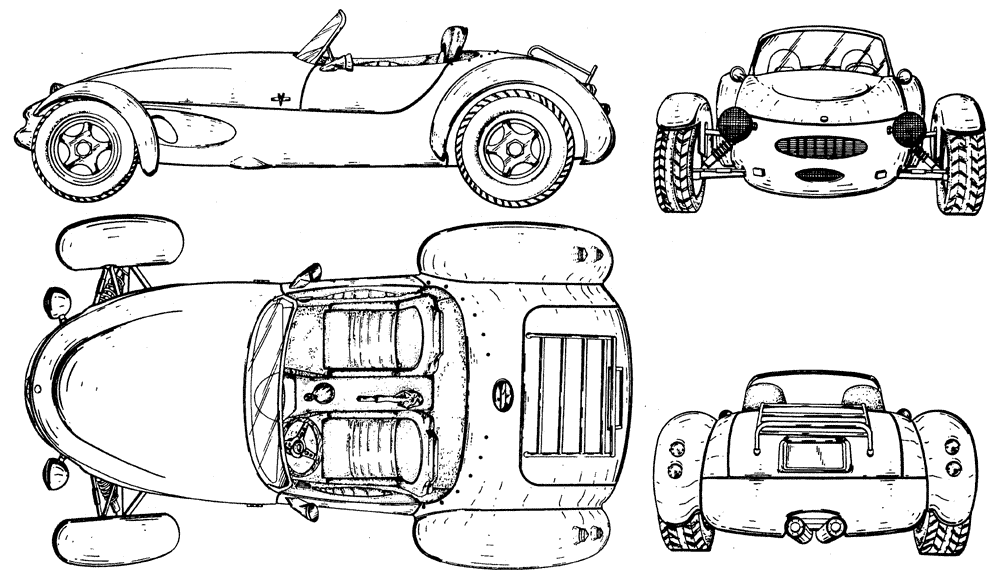
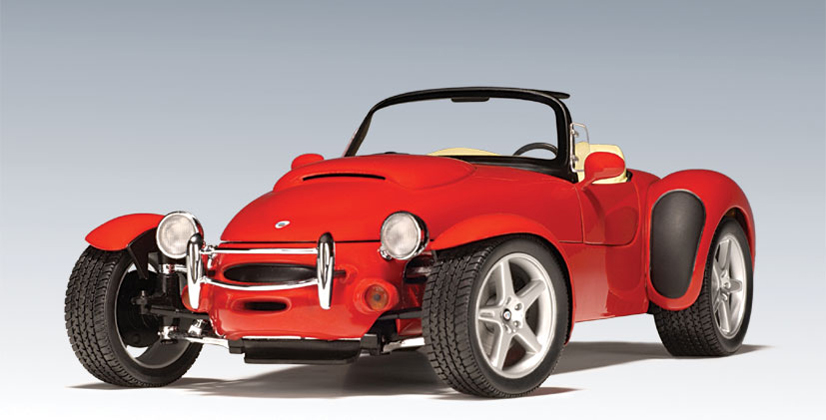

Other Johnson-Sperry cars:
Pioneer II (New Pioneer)
Challenger I (Classic Challenger)
2. Model Name/Manufacturer: Johnson-Sperry Challenger (aka Challenger II or Millenium Challenger)
3. Model Types: 2-door convertible roadster
4. Model Year: 2003 (1990s-2000s revival of the 30s classic, 2nd generation (2002-2007) model)
5. Nation of Origin: The United States of America
6. Production run: 1998-2007 (2 generations and a few small facelifts)
7. Number built: 2 784 268
8. Engine: V8 DOHC 32 valves
9. Horsepower: 305 bhp (227 kW, acceleration from 0 to 100 km/h in ca 4.7-5.1 seconds)
10. Drivetrain: 2wd, front mid-engine, rear-wheel-drive layout (FMR)
11. Transmission: manual 5 speed
12. Weight: ca OTL 1,120 kg
13. Description: A modern day revival of the classic late 1930s Challenger, one of Johnson-Sperry's bestselling cars of all time. Revealed to the public at the annual Hudson Automotive Exhibitions in New York in 1998, the Challenger II was no slouch either, living up to the legend of its world-famous predecessor and selling more than 2 million units during its nearly 10 years long production run. It truly managed what it set out to achieve : "The smart and speedy little roadcar for the coming new millenium.", as the official Johnson-Sperry advertising put it.
14. OTL equivalent: Panoz Roadster



Other Johnson-Sperry cars:
Pioneer II (New Pioneer)
Challenger I (Classic Challenger)
Last edited:
The Way It Was Not Vol. 2 : The many faces of the Škoda Favorit Sedan
Despite my lamentations about the Škoda Favorit never receiving a proper sedan/saloon version, there seem to have been some prototypes in the works :
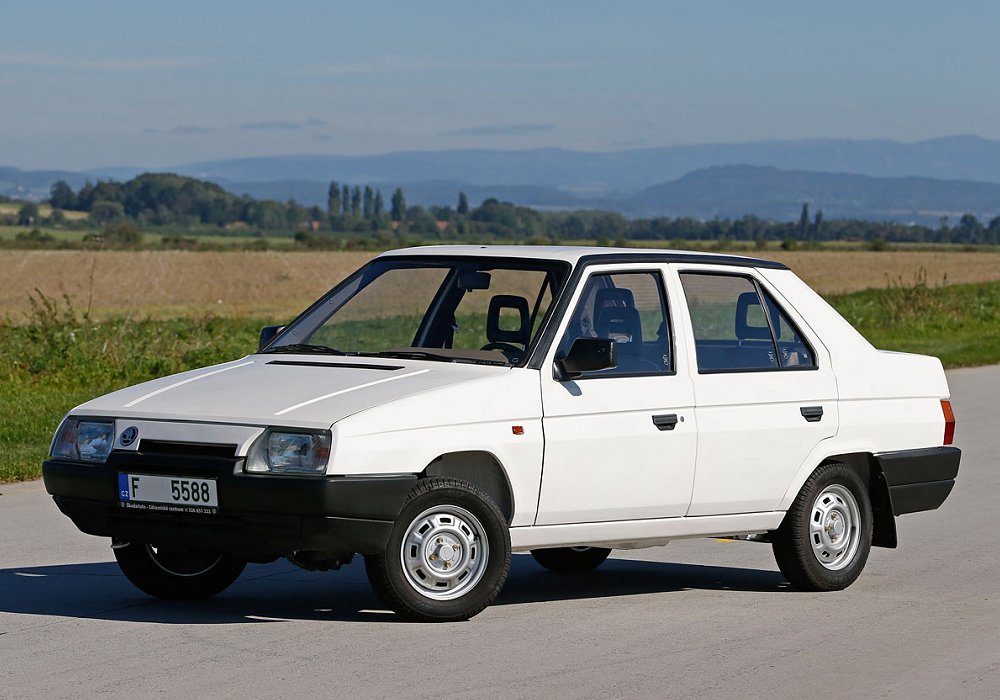
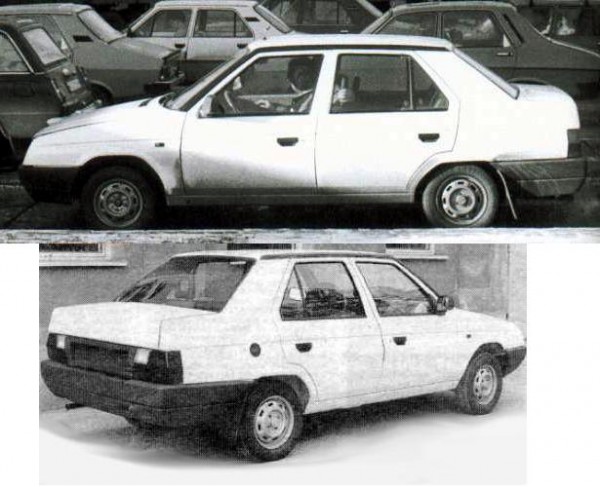
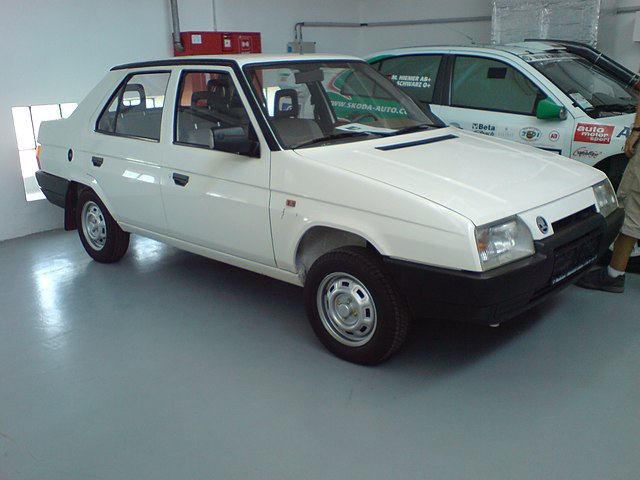
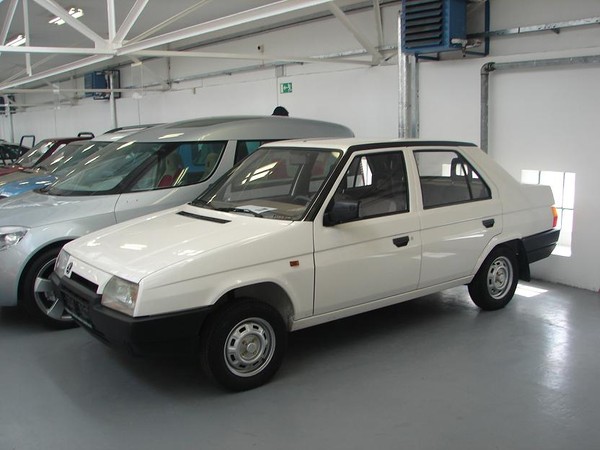
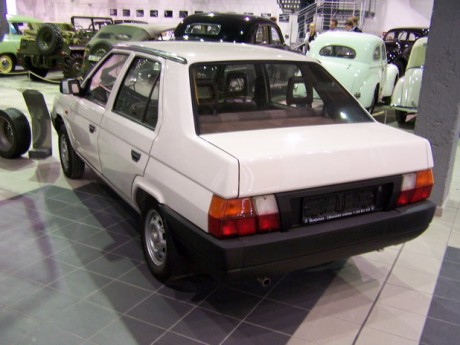
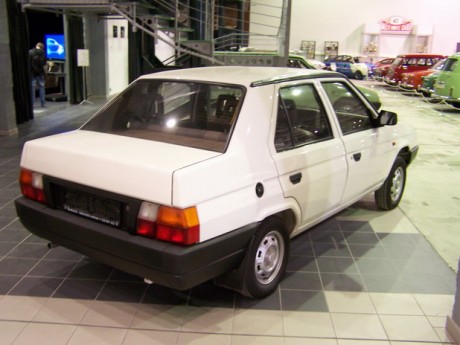

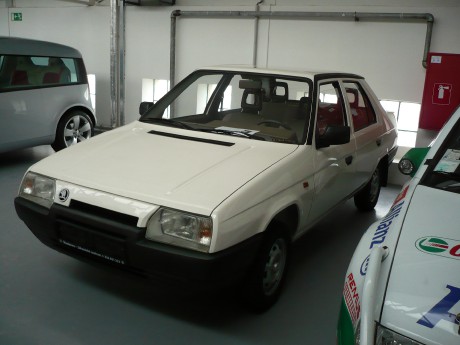
This white prototype of the unrealized sedan version can be seen in the official Škoda company museum.


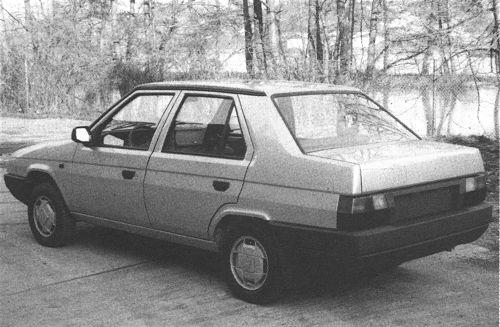
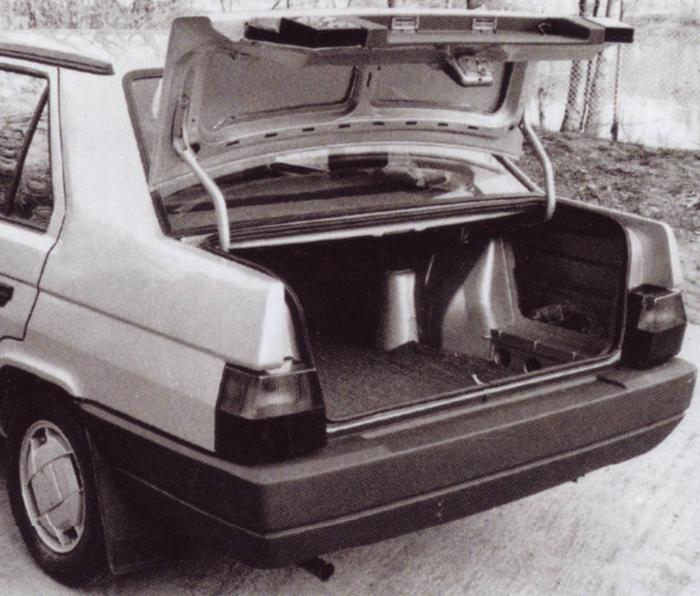
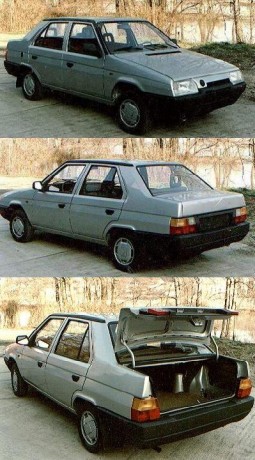
Then there's this grey prototype...
And outside of these, there were and are apparently home-brewn saloon versions of the model (probably made from modifying the back of the combi/stationwagon version) :
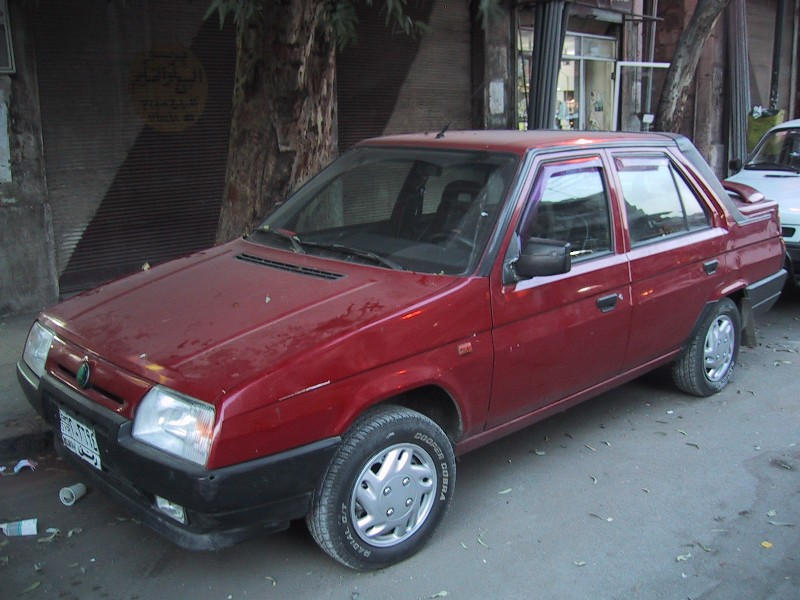
(Probably built from the standard combi version)
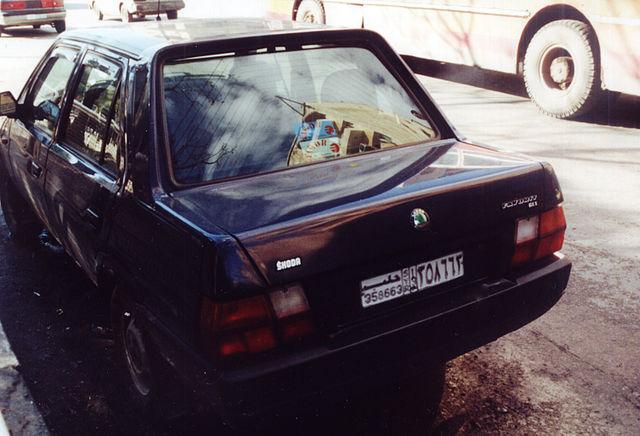
(An MTX Pick-up version rebuilt into a sedan)
Despite my lamentations about the Škoda Favorit never receiving a proper sedan/saloon version, there seem to have been some prototypes in the works :






This white prototype of the unrealized sedan version can be seen in the official Škoda company museum.




Then there's this grey prototype...
And outside of these, there were and are apparently home-brewn saloon versions of the model (probably made from modifying the back of the combi/stationwagon version) :

(Probably built from the standard combi version)

(An MTX Pick-up version rebuilt into a sedan)


1. Timeline: The Sparrow Avengers universe (European Crimson Skies TL)
2. Model name/Manufacturer: Tatra 840 aka "Celestia" ("Célestine" in French-speaking countries)
3. Model types: 3 door compact family car (an elongated hatchback of sorts, the 5 door version is currently in the works)
4. Model year: 2011
5. Nation of origin: The Czech-Moravian-Silesian Republic
6. Production run: 2008-present (has undergone a recent facelift)
7. Number built: 912 587 (so far)
8. Engine: 1.4 I4
9. Horsepower: 86-100 hp (depending on the version)
10. Drivetrain: 2wd, front-wheel drive
11. Transmission: manual 6-speed (an automatic version is in the works)
12. Weight: 1382 kg
13. Description: Tatra's latest celebrated passenger car, winning the "Car of the Year" category at the 2011 International European Motoring Awards (IEMA).
14. OTL equivalent : Škoda Joyster concept car (this ATL equivalent looks very similar on the outside, but is meant to have a standardized interior and a wide colour pallette for normal production, unlike the OTL concept car)
Last edited:
Interestingly in 1962 and 1963 Studebaker had plans on the drawing boards for a gas-electric hybrid. I think it was supposed to work much like the Chevy Volt. If they had stayed in buisness and had the money to develop it Studebaker might have been the first car company to introduce a production gas-electric hybrid around the year 1965 or 1967 that was their projected production time. Had they done that think where we would be today?
Hard to tell, it would depend on the success of that engine. If the consumers back then deemed it a dud or not too interesting/useful, there would probably not be too many changes to OTL hybrid car development. Though the example could inspire other companies worldwide to take a stab at the concept somewhat earlier than in OTL.
additionally, studebaker would have to find a reason for people to buy thier car at a time when gas is still extremely cheap.
additionally, studebaker would have to find a reason for people to buy thier car at a time when gas is still extremely cheap.
Very true, although it could have some success in urban areas, especially in places like New York and Boston, where the streets are a little tighter than say, Chicago or L.A.
Let's get this party started again.
Hey folks, first post of 2013. I've been wanting to put some of my oldest ideas out there and I figured I'd start with these two:
1. Timeline: To Be Determined(not OTL)
2. Model Name/Manufacturer: Oldsmobile Cutlass/4-4-2 W-45
3. Model Types: 2-door fastback coupe
4. Model Year: 1970
5. Place of Origin: Lansing, Mich., U.S.
6. Production run: 1970-1972
7. Number built: 8,100
8. Engine: 455ci V-8
9. Horsepower: 493 hp @ 5600 rpm (1970)
10. Drivetrain: RWD
11. Transmission: 4 speed manual, 3:08.1 gears
12. Weight: 3686 lbs.
13. Top Speed: 171 mph(174 with racing tires)
13. Description: Basically Oldsmobile's answer to the SS454 Chevelle, but was not a regular production option. There was a 1974 edition, but it wasn't even officially sponsored by GM, and was only able in the Western U.S. and Michigan, Indiana, Illinois, and New York.
14. OTL Equivalent: Basically, a far faster version of OTL's 442. And yeah, there actually was a W-45 option, but it was a Hurst package.
1. Timeline: To Be Determined(not OTL)
2. Model Name/Manufacturer: Chevrolet Corvette LS-6
3. Model Types: 2-door fastback coupe
4. Model Year: 1974
5. Place of Origin: St. Louis, Missouri, U.S.
6. Production run: 1970/1974.
7. Number built: 8,800
8. Engine: 454ci V-8
9. Horsepower: 396 hp @ 5,400 rpm (1974)
10. Drivetrain: RWD
11. Transmission: 4 speed manual.
12. Weight: 3279 lbs.
13. Top Speed: 174 mph
13. Description: Chevy's Corvette got one last power boost in 1974 with the revival of the LS-6 engine. Was not available in all states, however: In 1973, Georgia, Mississippi, Ohio, and 14 other states adopted strict emissions laws written by Georgia senator James Trundell, and sponsored by Miss. former Democrat James O. Eastland(a rabid segregationist who hated muscle cars because he thought they brought 'sin' to Southern teenagers); the LS-6 would not have been able to pass the Georgia standards. Ironically enough, though, California, which was the first state to promote the use of catalytic converters, ended up being the state in which slightly under a third of the total were sold.
14. OTL Equivalent: OTL's 1974 'Vette with a LOT of extra kick.
Hey folks, first post of 2013. I've been wanting to put some of my oldest ideas out there and I figured I'd start with these two:
1. Timeline: To Be Determined(not OTL)
2. Model Name/Manufacturer: Oldsmobile Cutlass/4-4-2 W-45
3. Model Types: 2-door fastback coupe
4. Model Year: 1970
5. Place of Origin: Lansing, Mich., U.S.
6. Production run: 1970-1972
7. Number built: 8,100
8. Engine: 455ci V-8
9. Horsepower: 493 hp @ 5600 rpm (1970)
10. Drivetrain: RWD
11. Transmission: 4 speed manual, 3:08.1 gears
12. Weight: 3686 lbs.
13. Top Speed: 171 mph(174 with racing tires)
13. Description: Basically Oldsmobile's answer to the SS454 Chevelle, but was not a regular production option. There was a 1974 edition, but it wasn't even officially sponsored by GM, and was only able in the Western U.S. and Michigan, Indiana, Illinois, and New York.
14. OTL Equivalent: Basically, a far faster version of OTL's 442. And yeah, there actually was a W-45 option, but it was a Hurst package.
1. Timeline: To Be Determined(not OTL)
2. Model Name/Manufacturer: Chevrolet Corvette LS-6
3. Model Types: 2-door fastback coupe
4. Model Year: 1974
5. Place of Origin: St. Louis, Missouri, U.S.
6. Production run: 1970/1974.
7. Number built: 8,800
8. Engine: 454ci V-8
9. Horsepower: 396 hp @ 5,400 rpm (1974)
10. Drivetrain: RWD
11. Transmission: 4 speed manual.
12. Weight: 3279 lbs.
13. Top Speed: 174 mph
13. Description: Chevy's Corvette got one last power boost in 1974 with the revival of the LS-6 engine. Was not available in all states, however: In 1973, Georgia, Mississippi, Ohio, and 14 other states adopted strict emissions laws written by Georgia senator James Trundell, and sponsored by Miss. former Democrat James O. Eastland(a rabid segregationist who hated muscle cars because he thought they brought 'sin' to Southern teenagers); the LS-6 would not have been able to pass the Georgia standards. Ironically enough, though, California, which was the first state to promote the use of catalytic converters, ended up being the state in which slightly under a third of the total were sold.
14. OTL Equivalent: OTL's 1974 'Vette with a LOT of extra kick.
How about a Volvo?
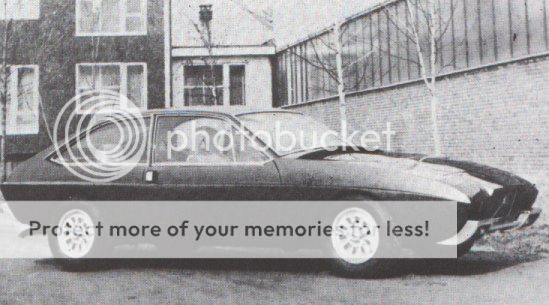
A Zagato Volvo? Never heard of it until now. Looks awesome, though.
Share:
